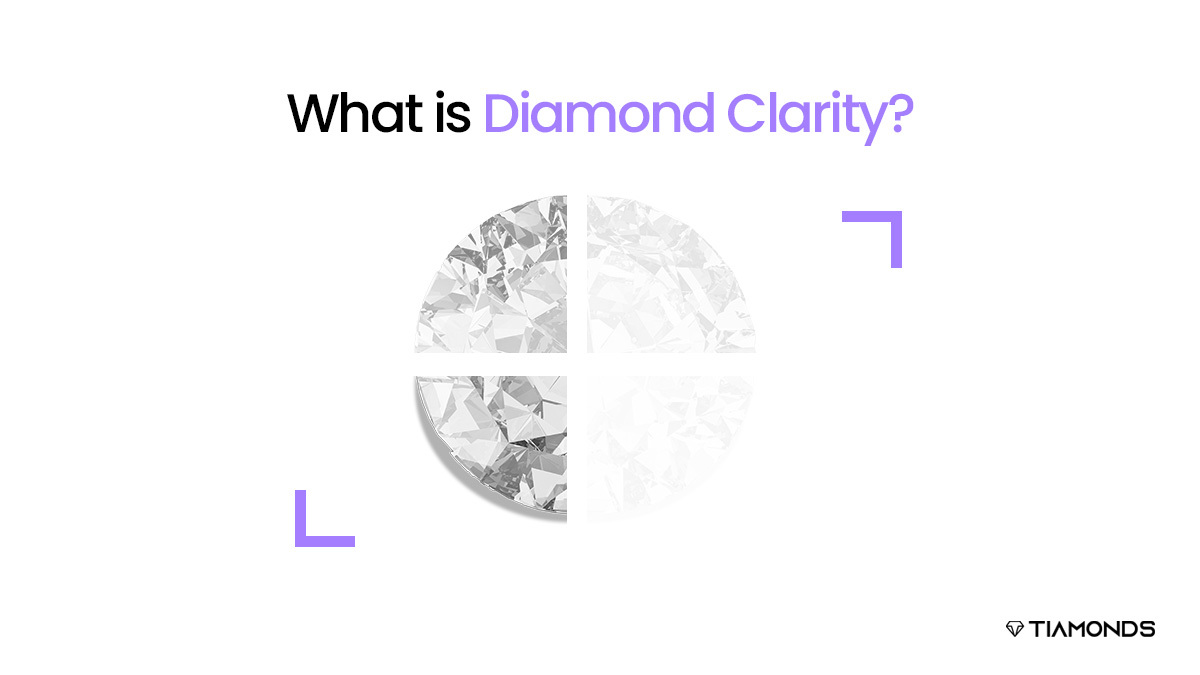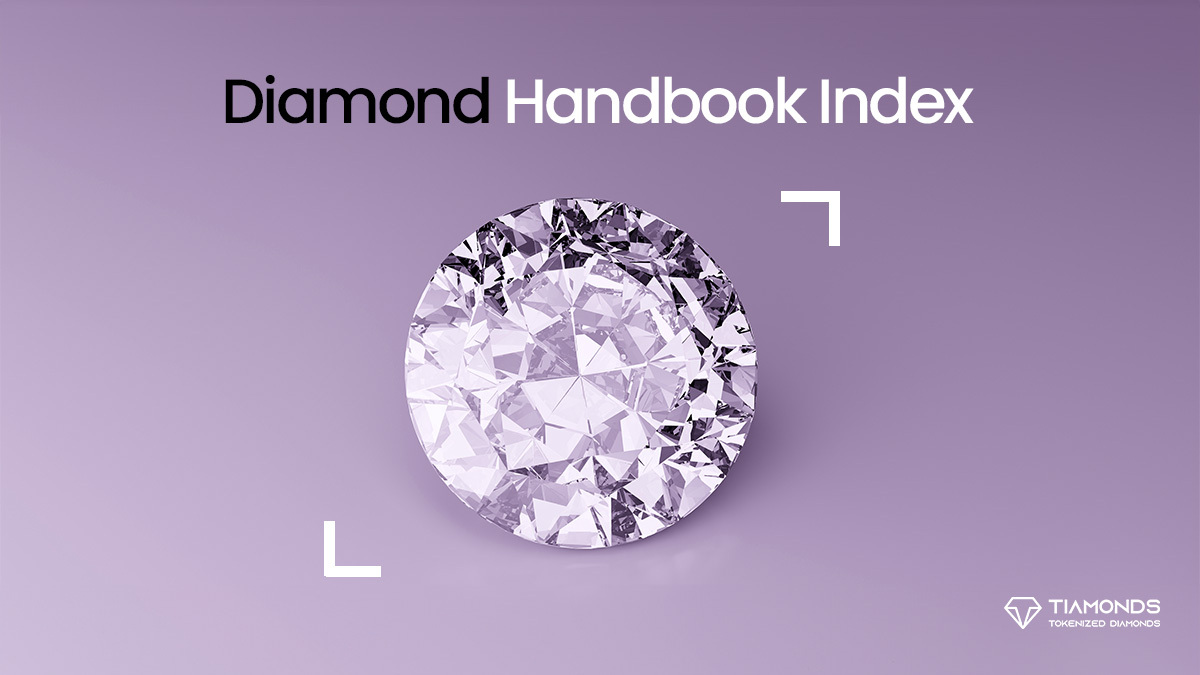Simply thinking of diamonds inspires visions of magnificence. These mesmerizing and dazzling gemstones are frequently referred to as the quintessence of excellence. Moreover, they have emerged as the gemstone of choice for individuals desiring to appear absolutely stunning. The reason is beyond any reasonable doubt. It is the most crystalline carbon material on the planet and the hardest gemstone that can be found. It is difficult to even begin to convey its splendor and brilliance. However, this is insufficient when purchasing diamond jewelry offline or online. Conversely, one should be well-versed in the basic principles of diamond clarity.
Diamond purchasers, collectors, and investors with years of experience are cognizant of the factors that contribute to the immense value of these precious gemstones. The predominant emphasis is placed on the four Cs of diamonds. The four Cs—cut, color, carat, and clarity—determine the value of a diamond. Although the diamond cut, color, and carat of a diamond are readily discernible, the correlation between clarity, its price, and its aesthetic appeal requires a keen eye. The following is comprehensive information regarding the clarity of diamonds.
What is Diamond Clarity?
Diamond, are composed of carbon. Indeed, they constitute the most concentrated variety of carbon presently accessible. It takes millions of years for natural diamonds to form. The pressure and heat of the earth’s mantle are formidable. The majority of naturally occurring diamonds exhibit imperfections or defects. Varieties in the number of blemishes and imperfections that comprise a diamond’s surface are referred to as defects. Internal features entrapped within it during its formation constitute inclusions. Diamonds rarely manifest in an impeccable and ideal state. Consequently, they are also quite costly. Inclusions or blemishes on diamonds are birthmarks of nature. These characteristics are what distinguish these gemstones.
Consequently, what bearing do these impurities and inclusions have on diamond clarity? In essence, the clarity of a diamond denotes its degree of cleanliness. The metric in question is employed to assess the aesthetic quality of a diamond.
Rapid Clarity Advice
There are numerous misunderstandings regarding the clarity of diamonds, one of which is that a high clarity grade is necessary to conceal flaws. Another prevalent misconception is that increased glitter corresponds to a higher clarity grade. Both of these statements are false. The following advice will assist a beginner in their diamond search:
Eye clean refers to a diamond in which the inclusions are imperceptible without the use of a magnification lens.
Slightly Included (SI) and Very Slightly Included (VS) classifications are a good starting point for the search and will maximize the budget, as inclusions are not readily apparent without magnification.
The size and configuration of a diamond influence its clarity. While clarity is not as significant as the cut or color of a diamond, one may want to invest more in a higher clarity grade if they are purchasing a diamond weighing more than one carat or if they are contemplating certain fancy-shaped diamonds (such as an emerald or Asscher cut, where flaws are more apparent).
Among the critical qualities that influence the aesthetic appeal of a diamond is its clarity. When purchasing a diamond, clarity is an essential factor to consider, similar to the other four Cs. Although clarity does impact price, there are several considerations that can assist anyone in determining which clarity grade is most suitable.
Understanding the Diamond Clarity Chart
Each diamond is distinct. Likewise, their faults persist. Since the defects are predominantly microscopic, gemologists examine diamonds with 10x magnification. They accomplish this while maintaining the diamond in the upside-down position. When an inclusion or flaw is not discernible when examining the diamond from above, it does not contribute to the determination of its clarity grade. Consequently, specialists employ lenses or microscopes to assess the characteristics, location, and measurements of each inclusion.
Proficient evaluators differentiate various clarity attributes by employing a 10x magnification. The positions of the inclusions are delineated in an identical manner on diamond plots. These plots represent individual diamonds on miniature maps. They contribute to the classification of every diamond. Each diamond possesses a unique internal structure. As a consequence, diamonds are invariably unique. Moreover, similar to fingerprints, the diamond patterns aid in the identification of each individual diamond.
The outcomes of the evaluation are graded by gemologists using a diamond clarity chart. The characteristics of the various grades listed on this chart are as follows:
FL and IF – Flawless, Internally Flawless
These categories denote flawless diamonds, as the nomenclature implies. Internal inclusions are not visible under the 10x magnification when examining a diamond of this clarity. However, surface defects or blemishes are not necessarily present in such diamonds.
VVS1 and VVS2 – Very Very Slightly Included
With this classification, only a limited number of inclusions are obscure, even under 10x magnification. The inclusions present in VVS1 gems are discernible when viewed from below, whereas those in VVS2 diamonds are apparent when viewed from above.
VS1 and VS2 – Very Slightly Included
During the 10x magnification examination, diamonds acquire this clarity grading when minute inclusions, such as crystals of other elements, become visible. Extreme effort is required to detect these imperfections. VS1 is characterized by a higher clarity grade in comparison to VS2.
SI1, SI2, and SI3 – Slightly Included
A diamond that exhibits distinct inclusions when examined under magnification possesses a clarity rating of this low.
I1, I2, and I3 – Included
There are evident inclusions in these diamonds. Frequently, even under 10x magnification, the inclusions in these diamonds are visible to the unaided eye. These diamonds typically exhibit diminished transparency and a dearth of brilliance.
The Five Clarity Factors of Diamonds
Size: The clarity grade is more likely to be lower for characteristics that are larger or more noticeable.
Number:This represents the quantity of readily observable attributes. Lessening the number of characteristics increases the clarity grade.
Position: Provide the location of a specific attribute. The rating is determined by the location of a characteristic within the anatomy of the diamond. Does it lie beneath the table, where it is most conspicuous, and in proximity to a pavilion? By transforming inclusions into reflectors, this position significantly increases the clarity grade.
Nature: The nature of a diamond feature pertains to the durability it imparts and the type of inclusion that is present within it.
Color and Relief: Color and relief are fundamentally a measurement of the contrast between the feature and the surrounding diamond, or the visibility of the feature.
Which Diamond Clarity Rating Is Appropriate?
To choose a jewel with the appropriate clarity rating, it is important to consider the following:. To begin with, if someone is seeking a diamond devoid of any inclusions,? Alternatively, are negligible quantities tolerable? Select one with the FL-IF grade or any VVS grade if the answer is yes. Compared to other grades of diamonds, they will be more expensive, but they are of superior quality. They also have an almost flawless appearance.
Although diamonds below the VS clarity grade are more affordable in comparison to those with higher diamond clarity ratings, they do not compromise on quality. Conversely, if someone is on a budget, a SI-rated diamond will suffice. It is imperative that they make sure that the inclusions are not overtly apparent. To obtain a diamond of greater carat weight at a reduced cost, select one falling within the SI3 or I1 classification.
When purchasing any gemstone other than the flawless variety, examine the defect and inclusion locations. The inclusions that are situated in closer proximity to the exterior facets have a lesser impact on the overall attractiveness of the object than if they were centered.




